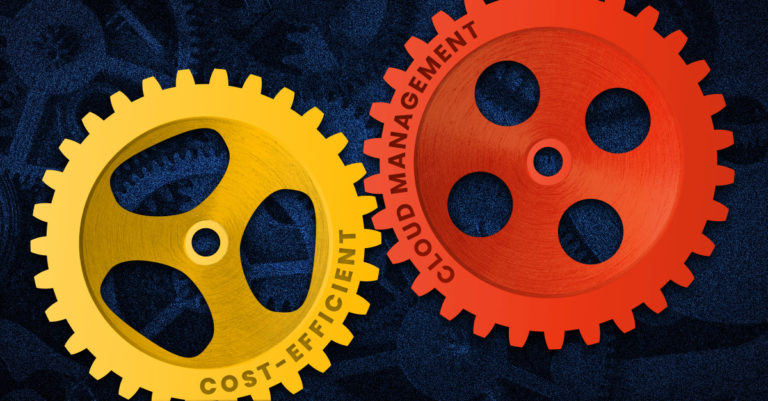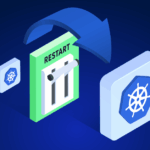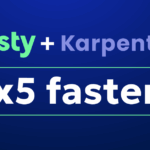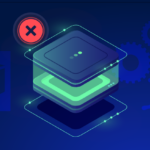
A CIOs Guide to Cost-efficient Cloud Management

Director of Marketing
Let’s face it. Getting your technology and business goals into the same roadmap is often as hard a sell as putting pineapple on pizza. However, if you want to make a success of your cloud strategy – it’s time to say Aloha to some new tricks.
The cloud needs technology and business savvy at its heart
Take a moment and try to think about whether your cloud journey is ultimately more of a tech-driven or business-focused initiative. You may have started out to save costs, (that’s business) but those costs were likely tied to not having the in-house expertise to build and maintain infrastructure. (We’d call that technology.) You were probably driven by some seriously shiny goals such as continuous integration and delivery for your developers – highly technical, we agree. But behind that vision was the chance to be faster to market than the competition – oh so wholly business.
Okay okay, we could do this all day. The point is that the role of the CIO is to bring together technology and business, and as you can see, there are few places this matters more than on the cloud. The cloud is where these elements of the organization intersect, and often conflict. Here are some best practices for allowing technology priorities to thrive, without losing sight of business constraints.
Beat your day one mentality
Cost savings are widely touted as the main reason to move to the cloud, with small and medium businesses claiming the cloud costs 40% less than building on-prem when you’re starting out. However, it’s essential to recognize that cost-savings aren’t the reason to stay on the cloud once you’re there. Your technology and business goals likely aligned when you were thinking about how to start out with quick time to market and without extensive capital expenditure. But months or years later, ongoing management is likely to have caused a divergence. Your engineering teams and developers are flying high pushing new releases, building in an agile way, and utilizing all the benefits of a cloud-native approach, but the costs are quickly spiralling.
If this sounds familiar, join our CIO support group on Tuesdays at… no, we’re kidding. But what you should do is stop waiting for the cloud to become cost-effective on its own. The promise of ‘bang for your buck’ was an onboarding-focused strategy, and it served you well. Now that you’re up and running, you might need a new toolbelt.
Track your usage
Here’s where visibility comes in. Do you know what’s happening on your cloud? If your mind jumps to your monthly cloud invoice, you’re busy playing catch up when you should be taking the lead. Don’t wait for your cloud vendor to inform you of how much you’ve spent, tell them how much you need.
Especially during the pandemic, many companies rushed to expand their usage of the cloud, whether it was to allow employees to better work and collaborate from home, or to support business continuity during a time of unprecedented uncertainty. However, Gartner believes that 80% of organizations overshoot their IaaS budgets, and 58% of organizations agree.
Cloud provider discounts can provide huge savings, such as Preemptible VMs from GCP that save up to 80%, AWS Spot Instances that save up to 90% on full price, and Azure Reserved VMs that save organizations up to 80%. However, to understand where it makes sense to use these, it’s essential to create a fully-fledged FinOps strategy. Otherwise, you can end up paying for idle resources or under-provisioning and scrambling to (expensively) scale to meet your needs in times of peak demand.
Move away from manual
We’re going to go ahead and say it – just like building that awesome new deck, this is a project you can’t do alone. (Believe us, we hate to take your partner’s side on this one.)
You need to save money on the cloud. But your environment is too complex to manage cost-savings with manual effort, and with the increased use of technologies such as containers and serverless, it’s only getting more difficult to visualize and optimize. In short – a focus on what technology needs is overshadowing what’s essential for your business side.
Idle resources are really the low-hanging fruit of your cloud cost optimization strategy. Start with a simple question: what are you paying for that you don’t use? For example, what about the costs of instances that are running 24/7, including evenings and weekends when they’re not in use. It’s like running your air conditioning when you’re out of the house. Not as cool as it sounds. Ba-dum-tss. (#sorrynotsorry)
This is where you can use technology to your business advantage. Automation can provide the FinOps tools you need to manage a dynamic cloud environment, and enable you to scale in real-time according to real-time needs. . Of course, not all cloud resources can be put on pause or scaled to suit real-time needs using auto scheduling. Think about load balancers or in some cases, databases which need to be eliminated when not utilized, or chosen ahead of time with accuracy in mind. However, for VMs/instances – right-sizing is the route to paying for exactly what you need, when you need it. Intelligent cloud management can automatically spin up resources in response to dynamic needs, reacting to real-time needs, without changing the way your DevOps teams like to work.
Use technology to get back on your business side
With 24/7 monitoring of your cloud infrastructure and usage, you can now start to gain a picture of what’s meant to be happening on your cloud – and what isn’t. For example, set alerts for when usage spikes, measure seasonal trends, set baselines for developer behavior, or dive into the root cause of added costs that seem out of sync with your cloud norms.
Look at that – a whole bunch of business benefits working in tandem with technology imperatives. Don’t try the pineapple pizza though – that really is as bad as it sounds.
Ready to try the autonomous cloud experience? Give Zesty a call.
Related Articles
-
 Why it’s time to get off the manual Kubernetes optimization treadmill
Why it’s time to get off the manual Kubernetes optimization treadmill
August 14, 2025 -
 Zesty now supports In-Place Pod Resizing for Seamless, Real-Time Vertical Scaling
Zesty now supports In-Place Pod Resizing for Seamless, Real-Time Vertical Scaling
July 30, 2025 -
 The endless cycle of manual K8s cost optimization is costing you
The endless cycle of manual K8s cost optimization is costing you
July 2, 2025 -
 This is the #1 cloud budget killer (and it’s easier to fix than you think)
This is the #1 cloud budget killer (and it’s easier to fix than you think)
June 16, 2025 -
 Are Kubernetes users right to ignore VPA?
Are Kubernetes users right to ignore VPA?
April 29, 2025


